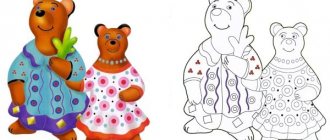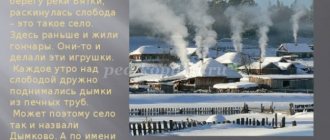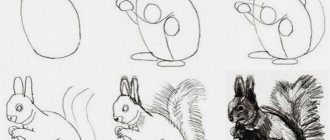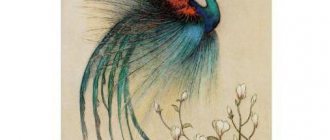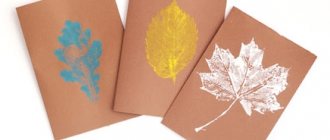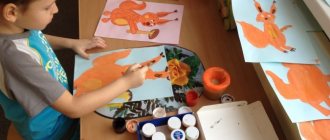Types of Dymkovo toys
Traditional images of Dymkovo toys are a lady, pets, and a turkey. All of them are made in bright colors, calling to show the joy of life. Collectors value figurines with which they can create certain plot compositions.
The Dymkovo toy, despite its canonicity, is exclusive. The fact is that every craftswoman tries to bring her own signature developments into the product. Therefore, it is impossible to find two absolutely identical toys.
Among the most popular images that are “played out” in the Dymkovo toy are the following:
The turkey is as colorful as a peacock, with a characteristic beard decorated with gold leaf. Sizes can vary: from tiny 5 cm to an impressive 40 cm;
A lady is both a sophisticated city lady and a traditional young lady in a kokoshnik. There may be children around her. Gold leaf also adorns individual details;
Lamb - figurines of this animal can have horns of different sizes. A distinctive feature is their gilding. The lambs can be ordinary or in elegant funny clothes;
A horse is a traditional image of an animal in bright blue or “bull’s-eye” colors.
Male images in Dymkovo toys are most often played out in the form of a rider on a horse, a walking city or village “gentleman”. Figurines of pigs, birds, and bells are popular.
Dymkovo clay toy
In Rus', pottery art originated in ancient times. At that time, our ancestors attached great importance to ritual holidays. The “pandemonium”, a celebration honoring the sun god Yaril, was no exception. On this day, the participants of the holiday threw painted clay balls and made full use of clay whistles. This is precisely what caused the appearance of ritual accessories, among which the Dymkovo toy took pride of place.
Content:
Dymkovo toy: 1 comment
The images of the whistle rider and the “walking gentleman” with their inherent rounded plastic forms, squat proportions, doll-like importance and seriousness are among the most striking and original in the assortment of Dymkovo toys. But if the plot of the rider-whistle is typical of almost all centers of folk clay toys of the 19th century, then the “walking gentleman” and the similar “walking lady” that appeared later are the work of the hands and imagination of only the Dymkovo craftswomen. They liked both toys. Each sculpted them in large numbers, varying the position of the hands, the color of clothing (for riders - always with epaulettes on the shoulders), rings, checks and polka dots on the whistles and bodies of horses, the height and shape of the hat, always worn dashingly, sometimes with a crease, sometimes with a zeros, then cocked hats.
Source
Dymkovo toy
Dymkovo toys are examples of miniature clay sculpture, unique products of one of the ancient Russian folk crafts, which originated in the settlement of Dymkovo, Vyatka province.
Nowadays this is the territory of the city of Kirov. Therefore, Dymkovo clay figurines are sometimes called “Kirov toys.” Dymkovo toys are handmade, so each of them has its own individuality. There are not and cannot be two identical figures, because the master puts special characteristic features into his toys.
Bright Dymkovo figurines
This applies to all stages of creating clay figurines, from the modeling process to painting. It is the uniqueness, originality and wide variability of forms that are the highlight of the Dymkovo toy.
Samples of Dymkovo toys
History of the fishery
The history of the Dymkovo fishery originates in the 15th - 16th centuries. Initially, colorful clay toys were shaped like whistles. Mothers made them for the amusement of their children from locally available natural materials.
Later, entire families began to make bright, funny figures. On long winter evenings, craftsmen and their household members kneaded a plastic mass from clay, sculpted small toys, and then dried them and fired them in a kiln at high temperature. Next, the products were painted by hand.
Dymkovo toy "Troika".
Bright funny figurines were successfully sold at the fair, which was held in honor of the spring holiday of the Whistler. It was held a month after Easter, and was dedicated to the memory of those killed in the Khlynovsky massacre in 1418.
On these days, mass celebrations were held. Residents of the Vyatka province had fun, sang and danced. The most popular musical instrument was the bright, skillfully painted clay whistle.
Later, the historical significance of the holiday was forgotten, but the tradition of making painted clay figurines took root and became widespread. This is how the world-famous Russian folk craft arose - the Dymkovo toy.
Subsequently, the craftsmen began making clay figurines on an ongoing basis. At the same time, the range of products has expanded significantly.
Dymkovo toy "Couple".
At the beginning of the 19th century, the production of Dymkovo toys spread throughout the Vyatka province and became widespread. Clay figurines were made in large quantities in almost every yard, so there were fewer and fewer local buyers.
Then small bright figurines began to be taken for sale to the Orenburg region, Moscow and other large cities, where fairs were often held and special shops selling toys and souvenirs were opened.
Dymkovo toy "Lady with a dog".
Materials and manufacturing technology
All parts of the figurine are sculpted separately, and then the product is assembled from the parts, fastening them together with liquid red clay. All connecting seams are carefully smoothed until a perfectly flat surface of the product is obtained.
The drying time for toys varies (from 2 days to one and a half months) - depending on the size and compositional complexity of the product.
Next, the figures are fired in a kiln at a temperature of about 850* C. After the firing procedure, Dymkovo toys are covered with two to three layers of tempera white.
At the beginning of the craft, instead of whitewash, they used chalk diluted in milk to a uniform consistency. Previously, tempera paints were used to paint toys. mixed with chicken eggs and diluted kvass.
After painting, the surface of the product was brushed with beaten egg whites, which helped to give a glossy shine and the colors looked brighter.
Instead of brushes, the main tools for applying drawings were bird feathers and thin pointed sticks.
Nowadays, bright aniline dyes and soft brushes made of natural bristles are used to paint Dymkovo toys.
"Girl with a samovar."
Color scheme and ornaments of paintings
A rich color palette has long been used to paint clay Dymkovo toys. Among the main colors characteristic of Dymkovo painting are the following:
The painting schemes are dominated by strict ornamentation using various geometric shapes. You can notice various compositional combinations of stripes, circles, diamonds, cells and dots.
As an additional decorative element, small droplets or diamonds made of gold leaf are applied to the finished colored pattern.
Theme of Dymkovo toys
At first, the shapes of the figures were simple and even primitive, but over time the appearance and quality of the toys improved, and their range expanded significantly.
Initially, the theme of Dymkovo toys was as follows:
Story toy "Family".
During the Soviet era, the folk craft of making Dymkovo toys was put on a production basis. Workshops were organized in which craftsmen made clay figurines by hand, fired them, and then painted and coated them with egg whites to make the colors brighter.
Samples of Dymkovo craft products
The theme of modern Dymkovo toys has expanded significantly. So, among the most common product samples are the following:
Today, the Dymkovo toy is a source of pride for craftsmen and a calling card of the entire Kirov region. It is difficult to overestimate the historical and cultural significance of this folk craft, which clearly demonstrates the creative potential of the inhabitants of the Vyatka region.
